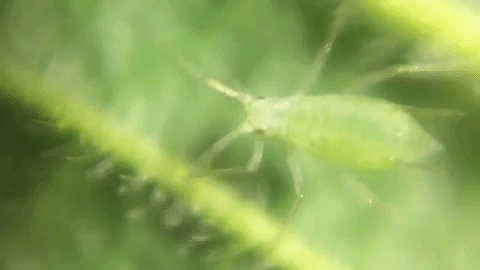What is a Cabbage Looper? | Raising caterpillars to moths
Well, hello there wriggly friends
You know how it goes. You’re growing four kinds of mint for a tea tasting comparison only to find the plants covered in nibbles. What’s this then? Oh, sure—caterpillars. That’s on you for leaving the tub outside. But, should you destroy all these new lives or raise them as your own? Don’t answer that. Let me.
Of all the COVID-19 projects, I wasn’t planning to become a mother. But there we were. And somehow, the older I get, the less inclined—or, able, I should say—I am to kill things. I guess that’s been a constant, but even at 16 I would swat midges and mosquitoes. Definitely wasps, in the very least. Now, I won’t even hurt those annoying fruit flies that decide to kamikaze into my cheap Pinot Grigio.
I digress. The point is, after realising I now had these little stowaways, I decided to raise them for my own. And if you’re keen on trying this for yourself, the first thing you’ll need is a “rest cloud”. That’s the fancy stupid name for this mini zip-able tent I bought for $15 on Amazon. I would say though, I don’t think I really needed it—the caterpillars were not interested in the least in being anywhere but on my spearmint plant.
Jemima came earliest—by several hours—and had very autumnal tones.
1. Cabbage Loopers love cabbages, duh
On that note, the first cool thing seems to be that these critters have taste. A genetically passed on preference, as sure as it is, but the order went like this: spearmint, kentucky mint, mountain mint, and finally rosemary. They had no interest at all for the chamomile. Apparently, beyond my personal experiences with mint, their preferences are (duh) red cabbage, green cabbage, broccoli, brussels sprouts, and so on.
Gregory was the most handsome, with huge golden-red wings and a tidy crown. The ends of his wings were very curvaceous. I think he was the fat caterpillar.
2. But they’re also pretty flexible
They have up to 160 host plants, and this variety is due to their flexible salivary glands—put plainly, they can adapt their taste. Even if a plant’s defensive strategy is to produce different compounds, effectively trying to “taste bad”, the moth can just shrug and decide to like it. Clever girl.
Gert defensively shat on me, which is fair.
3. Gender roles reversed
Sure, normally the males fight for mating rights, but that’s not set in stone. If the conditions are changed, females become the ones that compete—and the males look after the eggs. It’s actually pretty common for male insects (and fish and all sorts of other species) to raise the young since it’s more beneficial for females to concentrate energy on producing high a volume of eggs.
Rebecca was a frosty silver goddess with deep chocolate markings, unlike any of the others.
4. Breathing holes
Just like most creatures, caterpillars need to “breathe”, but they don’t have lungs. Instead, they have holes on the sides of their bodies called spiracles that deliver oxygen to their body tissues via tracheas. These holes can also open and close to let water in or out, as needed.
Poseidon, Kathy, Mark, and Grenadine all looked pretty similar as moths go, with silvery-green-brown details—but you can tell Big P by his pointy wings.
5. One long tube
In general, caterpillars are basically a food tube—I mean that both in terms of what they do and what predators view them as. They molt their skin around five times before pupating, typically eating the skin since it’s a free source of protein.
Kathy wasn’t crazy distinct, tbh. But she did her thing.
6. Magic soup
Besides a length of digestive tract and a nervous system, they also have a silk gland—something else that makes them pretty dang cool. When they’re ready to pupate, they spin up a silk home, which varies from species to species, and the madness begins. It’s a bit like they self-melt themselves down into their imaginal cells—like stem cells, which can become any kind of cell—and then reform. Basically only their true legs—the six insect legs at the front—remain somewhat unchanged. How mad is that?
Pretty sure this is Mark. He was, despite the name, quite unremarkable. Sorry.
7. Cells remember, though
Here’s the wildest part: Despite completely reorganizing their whole deal, from structure to soup to structure, they can remember things. Each molt of skin in caterpillars is called an instar. If the caterpillar is conditioned to avoid certain smells during the last two instars before pupating, it’ll retain that information as an adult. Nature is amazing.
Grenadine had nice little green-ish and yellow-ish bits, as well as vaguely pointy wings.



























